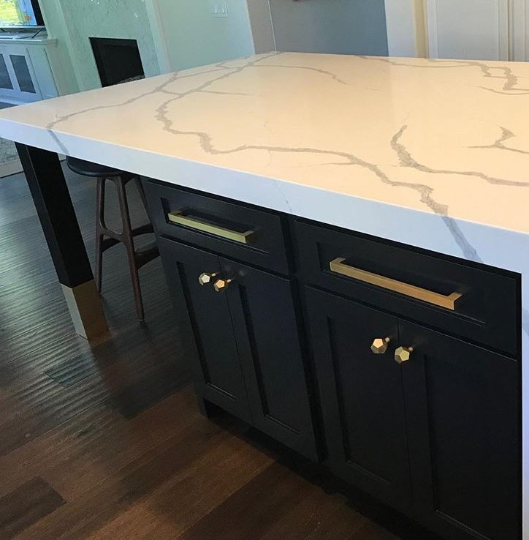Accomplish the Perfect Balance of Type and Function with Legs For Kitchen Island
Accomplish the Perfect Balance of Type and Function with Legs For Kitchen Island
Blog Article
A Guide to Selecting the Perfect Legs For Cooking Area Island for Your Home
Picking the ideal legs for your kitchen island is a nuanced decision that impacts both the capability and aesthetic appeal of this central room. Elements such as height, materials, and style play a critical duty in balancing your island with the general kitchen area layout. Additionally, comprehending the significance of security and maintenance can dramatically affect your selection. As you consider these elements, it ends up being apparent that the right legs can change not only the look of your kitchen area but also its functionality for many years to come. What certain functions should you focus on in this selection process?

Recognizing Cooking Area Island Legs
When selecting legs for a cooking area island, it's necessary to comprehend their visual and functional roles in the overall layout. The legs act as an essential assistance system, making sure stability and durability for the island, which typically operates as a work area, dining area, or collecting spot. The option of product and building and construction technique need to be robust adequate to withstand day-to-day use and prospective wear.
In addition to their structural responsibilities, legs contribute significantly to the island's aesthetic charm. They can improve the kitchen area's style, whether with traditional, contemporary, or diverse styles. The elevation and percentage of the legs are likewise vital considerations; they have to harmonize with the island's kitchen counter height while making sure comfy seating for those using the area.
Moreover, the leg design can influence the total flow of the kitchen area. Open, airy leg styles can produce a sense of lightness, while solid, considerable legs might share a more grounded and secure visual - Legs For Kitchen Island. Recognizing these aesthetic and useful facets will assist home owners in making educated options that complement their cooking area's style and enhance its use
Popular Styles and Materials
The selection of legs for a kitchen area island incorporates a selection of popular styles and materials, each offering unique attributes that can boost both capability and looks. Conventional legs commonly exhibit ornate information and workmanship, improving timeless kitchen designs.

Height and Security Factors To Consider

Security is an additional essential factor to consider. The legs of the kitchen island must offer ample support, ensuring that the structure can hold up against daily usage without changing or tottering. Product choice plays a significant duty in security; steel legs, for example, often tend to supply higher strength compared to wood. Furthermore, making sure that the island is securely anchored to the floor or wall can boost stability, particularly for larger islands right here that might bear substantial weight.
Matching Your Kitchen Visual
Selecting the appropriate legs for your cooking area island surpasses performance; it likewise plays a considerable function in the general visual of the space. When picking legs, consider the layout style of your kitchen. For a modern appearance, streamlined metal or minimal styles can develop a clean, contemporary vibe. On the various other hand, conventional or rustic kitchens often benefit from wooden legs with complex detailing or a troubled surface, enhancing heat and character.
Color is another vital variable. Legs that enhance or contrast with your island's surface and bordering cabinets can produce visual harmony or striking centerpieces. Coupling dark timber legs with a light marble countertop can include deepness and rate of interest. Additionally, think about the coating of the legs; matte, glossy, or textured finishes can dramatically affect the overall feeling of the kitchen.
Setup and Maintenance Tips
Setting up kitchen area island legs calls for careful focus to detail to make sure both stability and aesthetic appeal. Utilize a stud finder to locate wall surface studs if you are connecting the legs to a wall surface or making use of braces for added assistance.
When safeguarding the legs, utilize high-quality screws and, if necessary, timber adhesive for extra toughness. For metal legs, ensure that you are using ideal anchors and devices to avoid damage to your floor covering. It is recommended to check for levelness after installation, making adjustments as required to stay clear of wobbling.
Upkeep is equally vital for longevity - Legs For Kitchen Island. Consistently check the legs for any type of signs of wear or loosening, especially in high-traffic areas. Tidy the legs with a suitable cleaner, preventing rough materials that may scrape the surface. For wood legs, take into consideration applying a timber conditioner regularly to maintain their finish. By complying with these setup and maintenance tips, you can guarantee that your kitchen island legs stay both aesthetically attractive and useful.
Final Thought
In verdict, selecting the ideal legs for a kitchen island requires mindful factor to consider of height, stability, and aesthetic compatibility. By picking ideal materials and designs that line up useful source with the total kitchen style, performance can be enhanced while keeping visual appeal. Appropriate installment and ongoing upkeep further add to the toughness and durability of the kitchen island. Inevitably, thoughtful leg selection plays a critical role in boosting both the practicality and design of the kitchen area room.
When selecting legs for a kitchen area island, it's necessary to recognize their practical and aesthetic roles in the total style. Open, airy leg styles can develop a feeling of agility, while solid, substantial legs might convey a much more based and secure visual. The legs of the kitchen island should provide adequate assistance, ensuring that the structure can endure everyday use without shifting or sites tottering.Installing cooking area island legs needs cautious interest to information to guarantee both security and aesthetic charm.In conclusion, selecting the suitable legs for a kitchen island necessitates cautious consideration of elevation, stability, and aesthetic compatibility.
Report this page